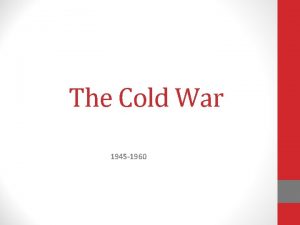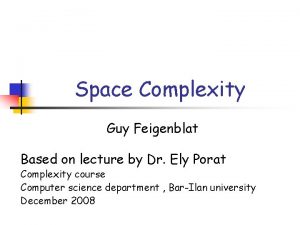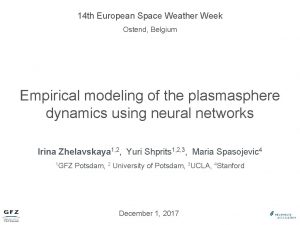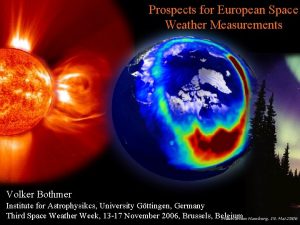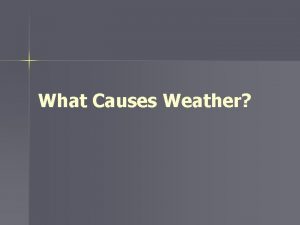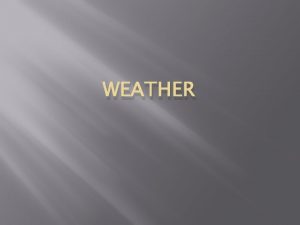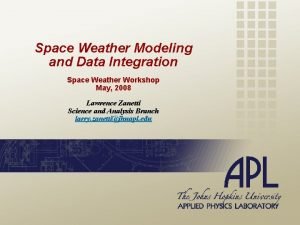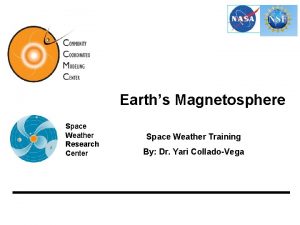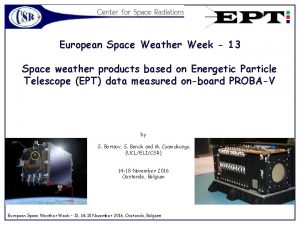SPACE WEATHER Causes of space weather Space weather













- Slides: 13

SPACE WEATHER

Causes of space weather Space weather is caused mainly by storms and eruptions in our volatile Sun sending potentially dangerous radiation towards Earth.


Effects of Space weather It also causes the spectacular “aurora” light displays that have awed so many in the polar regions — a beautiful show of radiation hitting Earth’s magnetic field

CME OR SOLAR FLARES The Sun randomly and suddenly ejects bursts of its component plasma or magnetic matter in events called coronal mass ejections (CME), and is subject to equally arbitrary bursts of radiation called solar flares.

RADIATIONS BRING ALONG WITH THEM PARTICLES LIKE NEUTRINOS THAT RIDE ON SOLAR WIND AND CAN BE HARMFUL

HARMFULL AFFECTS Sudden flares or outbursts can cause geomagnetic storms that affect Manmade systems in space and on Earth, though the magnetosphere protects us humans from the worst effects on the ground. CME, for example, can trigger magnetic current surges on long terrestrial lines like electric power lines. The magnetic disturbances can also throw out radar, radio signals and satellites

SOLAR FLARE EFFECTS Solar flares boost the level of radiation that reaches Earth and its atmosphere, which expands and becomes more dense for satellites to move through, causing drag that reduces their lifetime. Satellites can also fall victim to sudden magnetic charge changes damaging their electronics.

Extra shield for astronauts Astronauts, too may be in danger, hence extra-protective shields against radiation bursts that are provided in parts of the orbiting International Space Station.

Effect on Humans There is a small risk for humans, as they are protected by the magnetosphere. But: Some research says aircrew flying frequently at high altitude on long-haul flights may receive a radiation dose equivalent to several chest x-rays from exposure to solar flare radiation. .

VIEW http: //www. youtube. com/watch? v=j u 1 GD 9 xqw 3 g&feature=share&list=PL 2 FD 9 DF 93 D 1 CFD 00 E

Monitoring the weather Space weather is monitored by looking at the Sun with satellites and telescopes and measuring changes in the Earth’s magnetic field and radio noise. Even the aurora are monitored — changes in their shape can indicate solar storm events. (Data obtained from the European Space Agency)

Bibliography http: //www. youtube. com/watch? v=ju 1 GD 9 xqw 3 g&feature=share&list=PL 2 F D 9 DF 93 D 1 CFD 00 E Data obtained from the European Space Agency Nasa @ space center http: //www. windows 2 universe. org/s pace_weather/sw_in_depth/images/sp ace_weather_effects_society_big_gif_i mage. html
 Ultimate vs proximate causation
Ultimate vs proximate causation Polygyny in animals
Polygyny in animals Cpalms what causes weather
Cpalms what causes weather Effects of cold war
Effects of cold war Weather station model weather symbols
Weather station model weather symbols Winter tongue twisters
Winter tongue twisters Poem on seasons
Poem on seasons It's rainy and windy
It's rainy and windy Whether the weather be fine
Whether the weather be fine Heavy weather by weather report
Heavy weather by weather report Capital weather gang weather wall
Capital weather gang weather wall Space weather family guy
Space weather family guy European space weather week
European space weather week Space weather
Space weather



